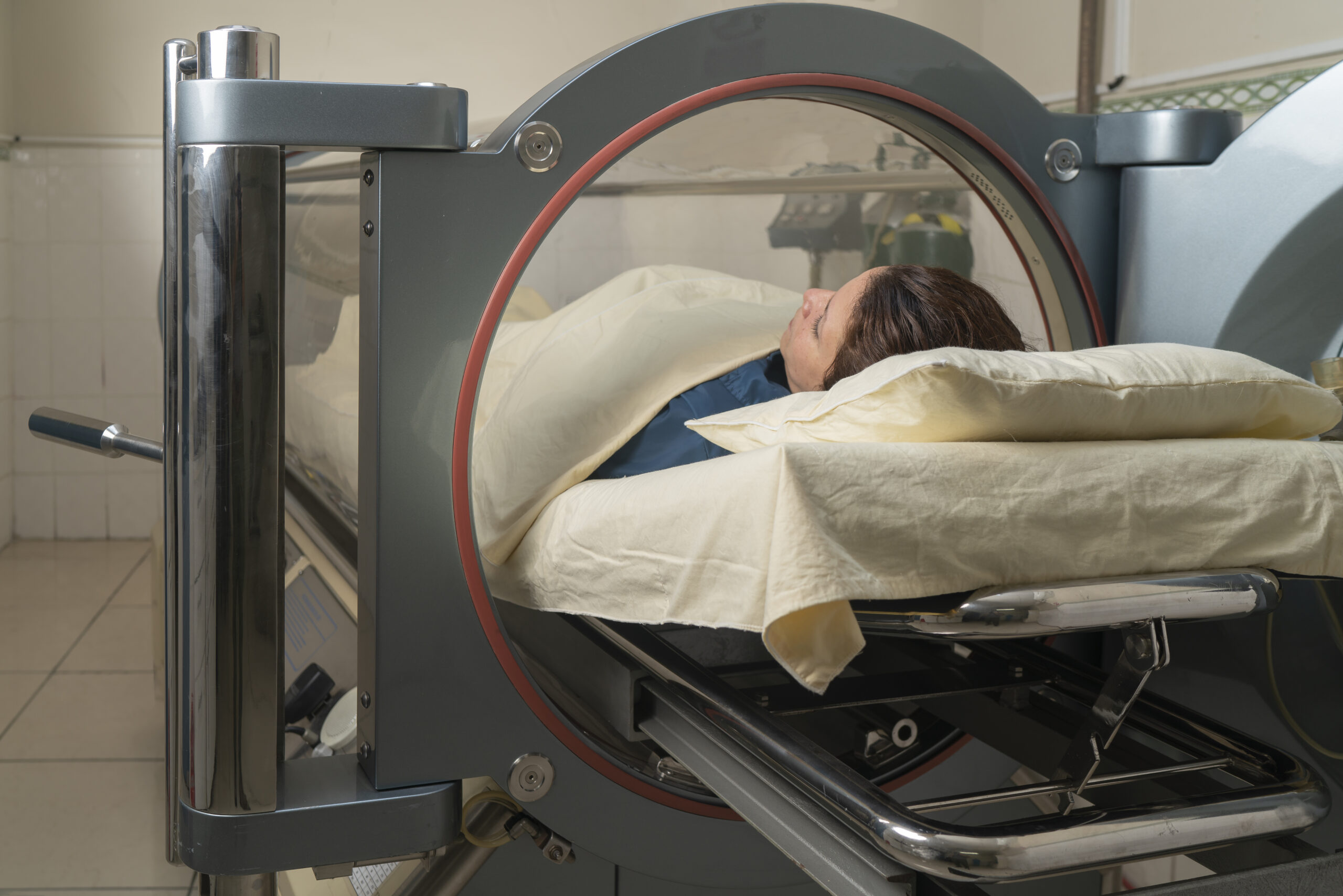Can Hyperbaric Oxygen Therapy Aid Stroke Recovery? What Science Says So Far

A stroke often marks a critical turning point: one moment life flows normally, the next, basic functions—speech, movement, memory—are profoundly altered. Recovery journeys are diverse and non-linear.
Among emerging therapies, hyperbaric oxygen therapy for stroke recovery (HBOT) is drawing fresh interest from researchers, clinicians, and patients alike.
Let’s delve into the science behind HBOT’s potential, its limitations, and why it remains both hopeful and cautious territory.
- The Stroke Recovery Challenge
Ischemic strokes—caused by blocked blood vessels—comprise about 87% of all strokes. They result in oxygen deprivation, inflammation, and cell death in the brain PMC.
While early treatment with tPA (clot-busting medication) is life-saving, it must be administered quickly—within 4.5 hours of symptom onset.
After that window closes, therapeutic options narrow sharply, PMC. Tools to support recovery later, spanning weeks to months, are limited. Functional improvements beyond the early phase often plateau. That’s why hyperbaric oxygen therapy for stroke recovery is a compelling area of exploration.
- How HBOT Works in Stroke
At its core, HBOT delivers 100% oxygen at elevated pressures inside a sealed chamber. This increases oxygen dissolved in plasma, helping it reach oxygen-starved brain tissues. The extra oxygen may:
- Reduce oxidative stress and inflammation
- Stabilize the blood-brain barrier
- Lower intracranial pressure and cerebral edema
- Encourage angiogenesis and brain metabolism recovery PMC
In essence, hyperbaric oxygen therapy for stroke recovery aims to create an environment conducive to healing—even after initial damage.
- What Preclinical and Emerging Studies Tell Us
In preclinical (animal) models, HBOT has helped reduce infarct volume and inflammatory damage after induced strokes.
These findings establish a biological basis for neuroprotection, Frontiers. In early human studies, the results are intriguing:
- A randomized prospective trial published in PLOS ONE (2013) found that HBOT induced late neuroplasticity in chronic post-stroke patients. These improvements occurred even long after the initial brain injury, showing that recovery may be possible beyond the acute phase, PLOS.
- A 2020 retrospective analysis involving 162 chronic stroke survivors treated with 40–60 HBOT sessions showed significant cognitive improvements in 86% of participants, including memory, motor skills, and processing speed PubMed.
- A 2024 study published in BMC Neurology conducted a meta-analysis of 8 RCTs with 493 participants in acute ischemic stroke. It found no statistically significant benefit in key outcome measures like NIHSS or Barthel Index—but confirmed the safety of HBOT in those settings, BioMed Central.
- Interpreting the Evidence
When it comes to hyperbaric oxygen therapy for stroke recovery, the data is nuanced:
| Domain | Findings |
| Chronic Stroke | Promising improvements in motor and cognitive function in several small studies, PLOSPubMed |
| Acute Stroke | Current meta-analyses show no clear benefit, though safe, BioMed Central |
| Preclinical Models | Strong evidence supports mechanisms of healing and neuroplasticity, Frontiers |
These findings suggest HBOT may be most effective during the later rehabilitation stage rather than immediately after onset. The therapy’s success may depend on protocol, timing, and patient selection.
- Real-World Use and Feasibility
Beyond controlled trials, real-world feasibility matters. In a 2023 study, 10 stroke patients completed everyday HBOT sessions (40 treatments). Most showed functional improvements in the NIH Stroke Scale, with no serious adverse events, MDPI. While not conclusive, these outcomes suggest that hyperbaric oxygen therapy for stroke recovery can be delivered safely in outpatient settings when properly managed.
- Integrating HBOT Into Stroke Rehabilitation
HBOT should be seen as complementary, not standalone. Traditional rehab—physical therapy, speech therapy, occupational therapy—remains foundational.
However, combining HBOT with proven neurorehabilitation techniques could enhance functional gains, especially by promoting brain plasticity later in recovery.
Mechanistically, HBOT affects key processes like mitochondrial function, angiogenesis, and inflammation regulation—pathways essential in post-stroke recovery, Frontiers.
- Looking Ahead: What’s Next in HBOT Research
- Rigorous, large-scale clinical trials are needed—not just pilot or retrospective studies
- Optimizing the therapeutic window: What is the ideal timing for HBOT—acute vs. chronic phases?
- Investigating dose-response dynamics: Is there a “sweet spot” for pressure and frequency?
- Exploring adjunct protocols: combining HBOT with neuromodulation, pharmacotherapy, or regenerative therapies
- Long-term outcome tracking: Sustained benefits? Functional independence? Quality of life?
- Conclusion: A Balanced Scientific View
Hyperbaric oxygen therapy for stroke recovery is neither a miracle cure nor a dead end—it’s a promising, evidence-informed adjunct with the potential to support late recovery in select patients. Preclinical data and small human studies show meaningful gains; meta-analyses flag limited acute-phase impact but reinforce safety.
For clinicians, patients, and caregivers exploring all available recovery tools, HBOT may offer a scientifically grounded option—when introduced thoughtfully and in context.
To dive deeper into the evolving science and clinical applications of HBOT across conditions like stroke and beyond, consider joining peers at the IHA Hyperbaric Medicine Conference, Sept 25–28, 2025, in Pensacola Beach, FL.
FAQs on Hyperbaric Oxygen Therapy for Stroke Recovery
Q1. What is hyperbaric oxygen therapy (HBOT)?
Hyperbaric oxygen therapy (HBOT) is a medical treatment in which a patient breathes 100% oxygen in a pressurized chamber. This process increases the amount of oxygen dissolved in the blood and delivered to body tissues, which can promote healing and reduce inflammation.
Q2. How does hyperbaric oxygen therapy help with stroke recovery?
After a stroke, parts of the brain may remain in a “dormant” state due to reduced oxygen supply. HBOT can enhance oxygen delivery to these areas, stimulate blood vessel growth, and support neuroplasticity—the brain’s ability to reorganize and form new connections. These effects may aid stroke recovery in some patients.
Q3. Is HBOT for stroke recovery scientifically proven?
Research on HBOT for stroke recovery is promising but not yet conclusive. Several studies show improved neurological function and quality of life, while others call for larger clinical trials. Patients should consult their physician before considering HBOT as part of post-stroke rehabilitation.
Q4. How many HBOT sessions are needed for stroke patients?
The number of sessions varies depending on the patient’s condition, the severity of the stroke, and the treatment protocol. Typically, stroke patients may undergo 20–40 sessions, each lasting 60–90 minutes. However, treatment plans are highly individualized and should be determined by a certified HBOT provider.
Q5. Are there risks or side effects of HBOT for stroke recovery?
Yes, while generally safe, HBOT can cause temporary side effects such as ear discomfort, sinus pain, fatigue, or mild vision changes. Rare complications include oxygen toxicity or barotrauma. It is important to undergo HBOT under medical supervision at an accredited center.
Q6. Who should not undergo HBOT after a stroke?
Patients with certain conditions—such as untreated pneumothorax (collapsed lung), severe chronic obstructive pulmonary disease (COPD), or uncontrolled seizures—may not be suitable for HBOT. A thorough medical evaluation is essential before starting therapy.
Q7. Where can I find HBOT centers offering stroke recovery treatment?
Accredited hyperbaric medicine centers are available in many hospitals and specialized clinics worldwide. Patients should look for facilities certified by organizations such as the Undersea and Hyperbaric Medical Society (UHMS) or regional medical associations.
Q8. Can HBOT replace traditional stroke rehabilitation?
No, HBOT should not replace proven stroke rehabilitation methods such as physical therapy, occupational therapy, or speech therapy. Instead, it may serve as a complementary therapy to enhance recovery outcomes when integrated into a comprehensive treatment plan.




